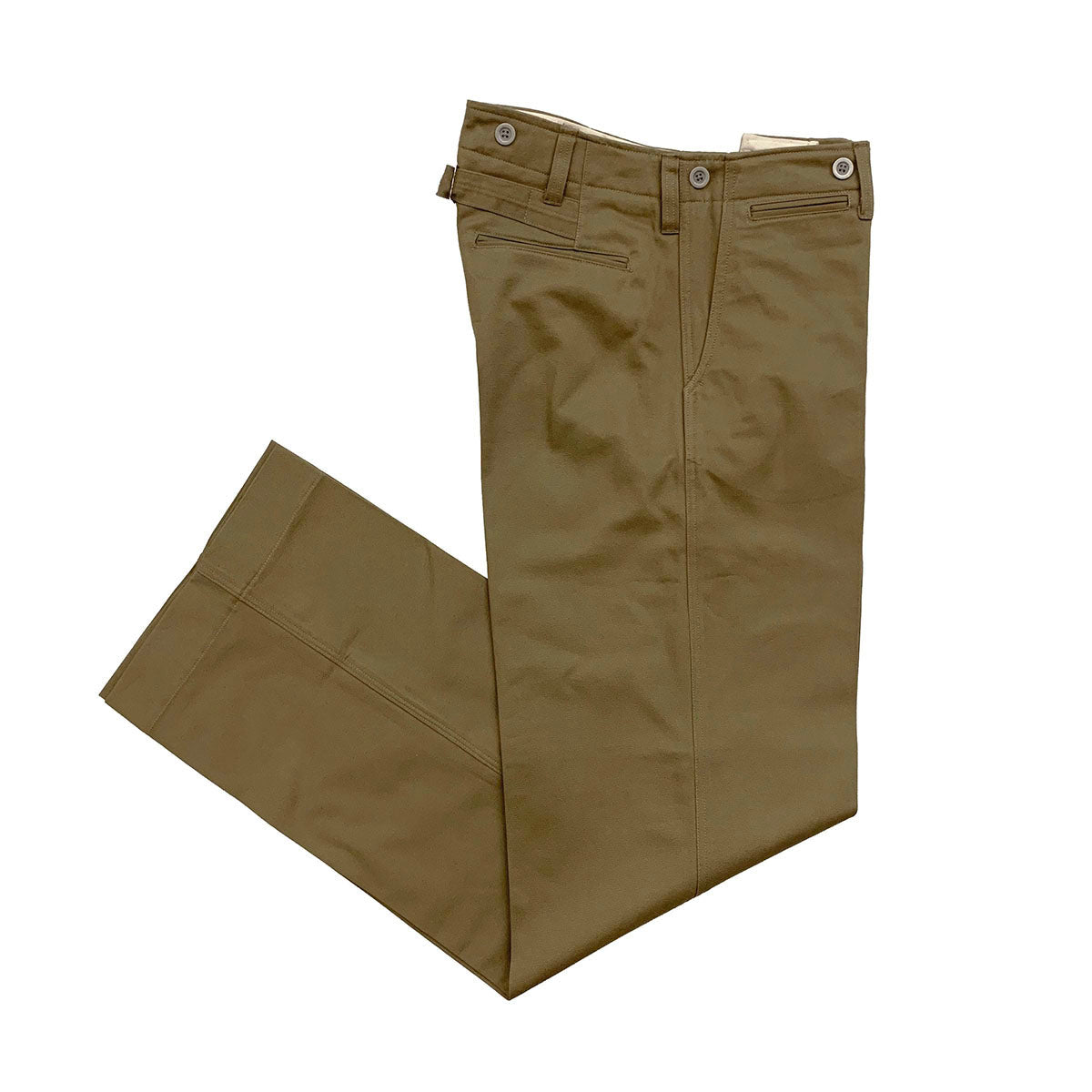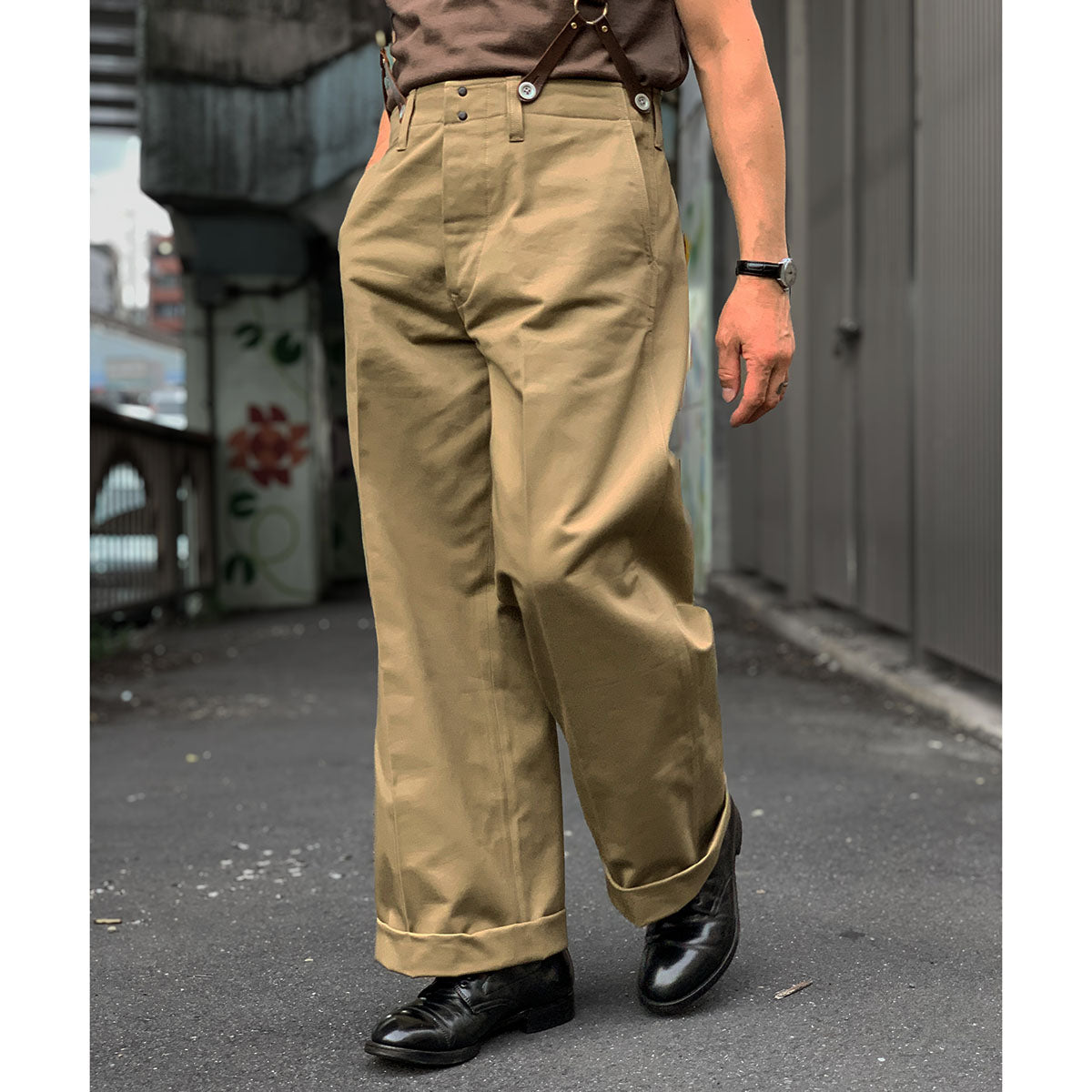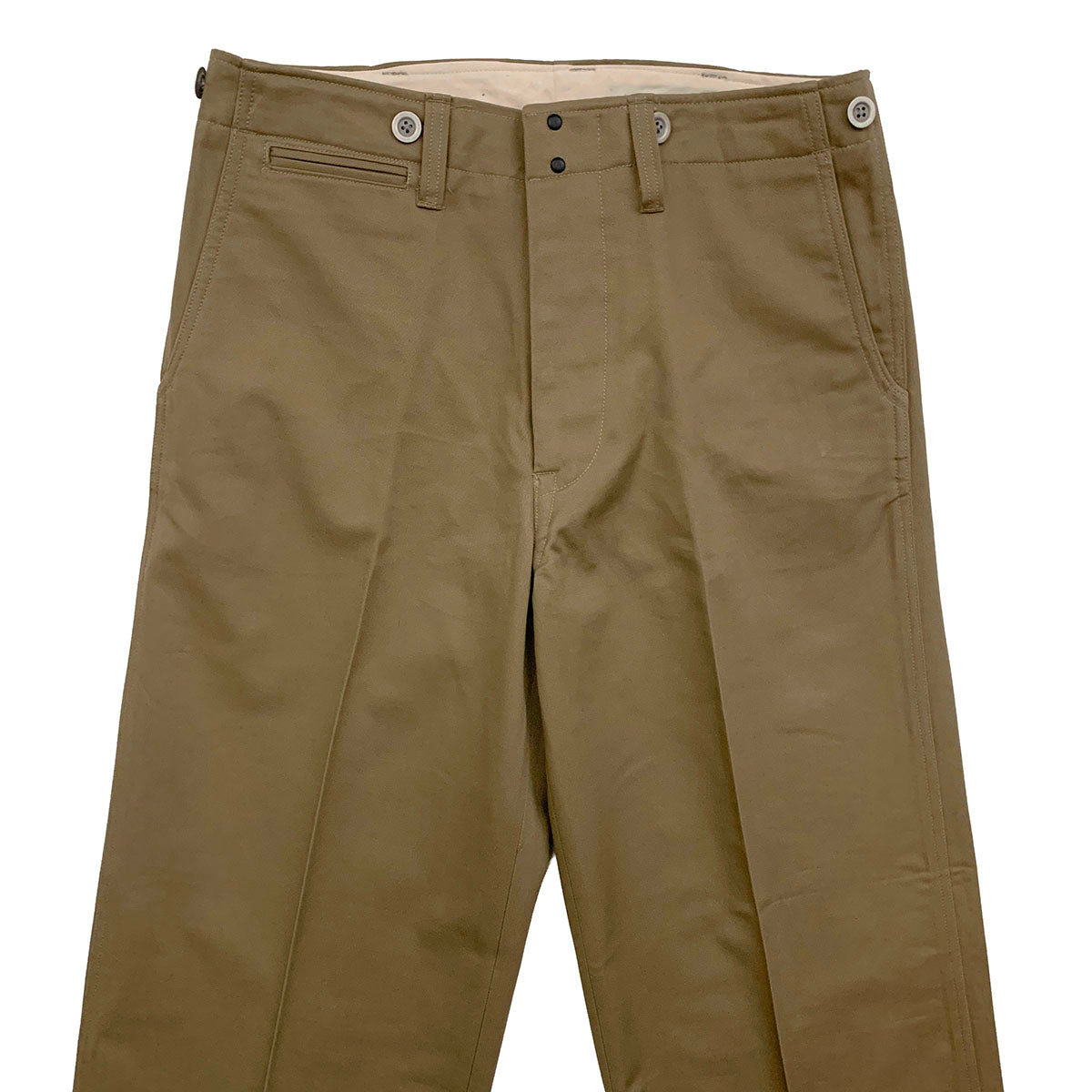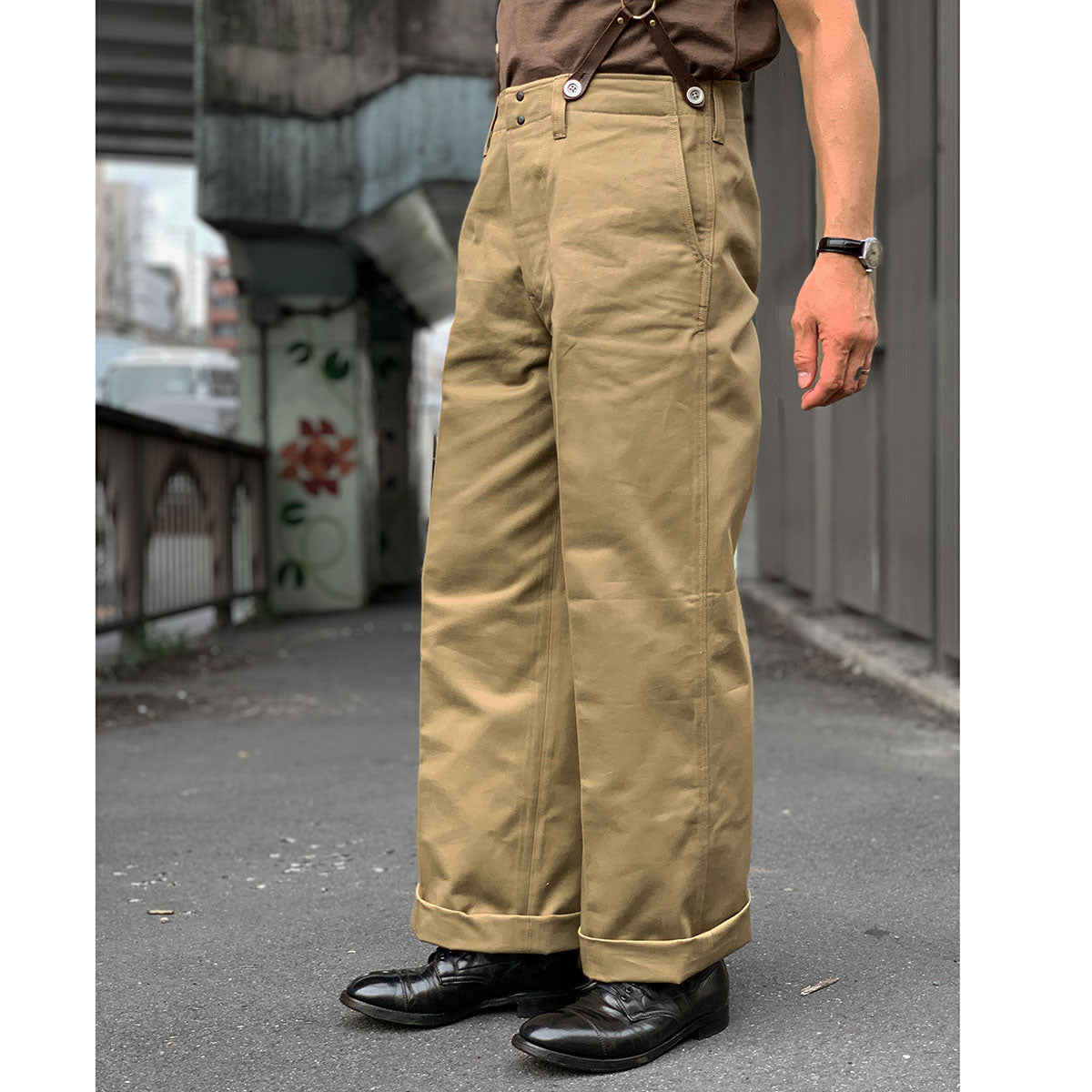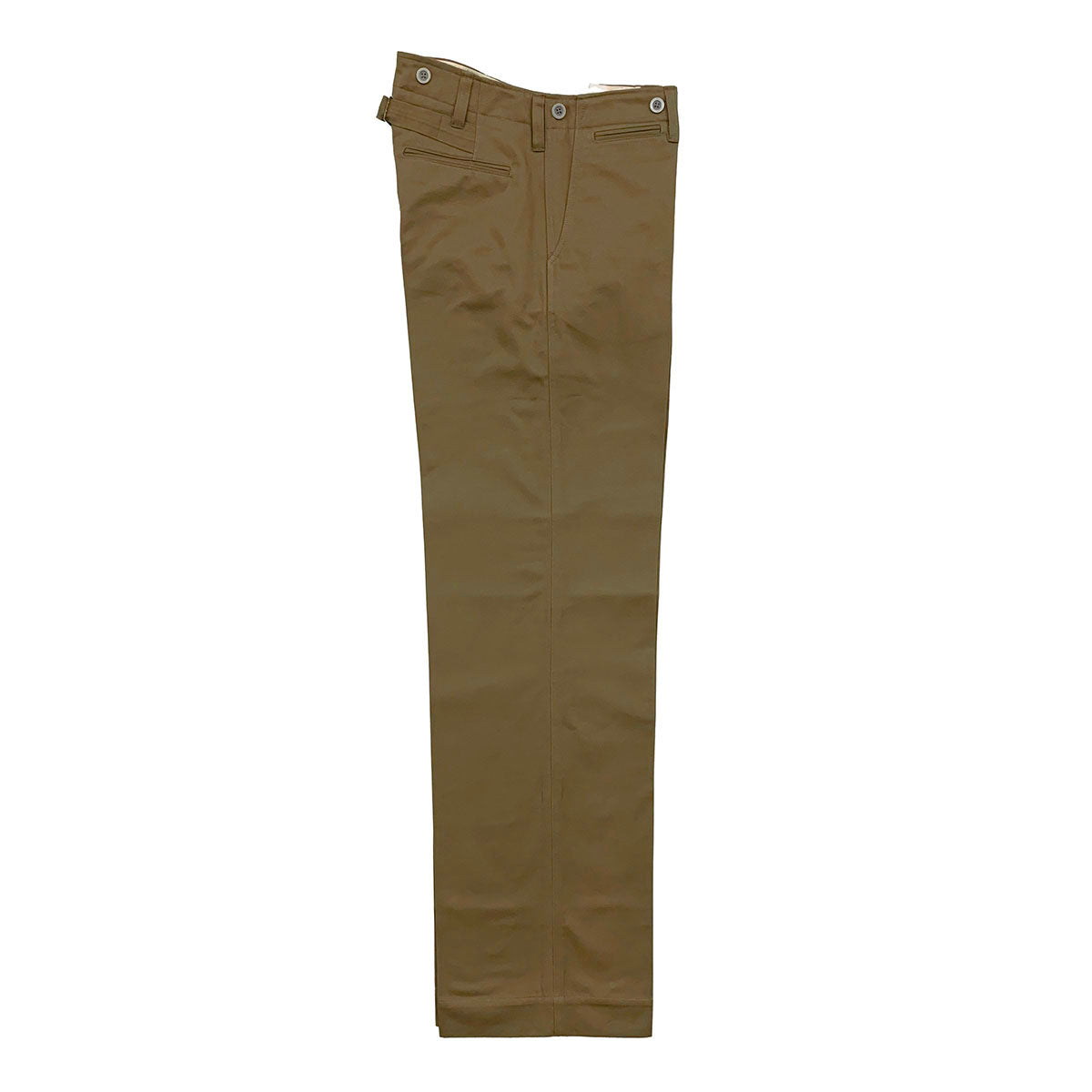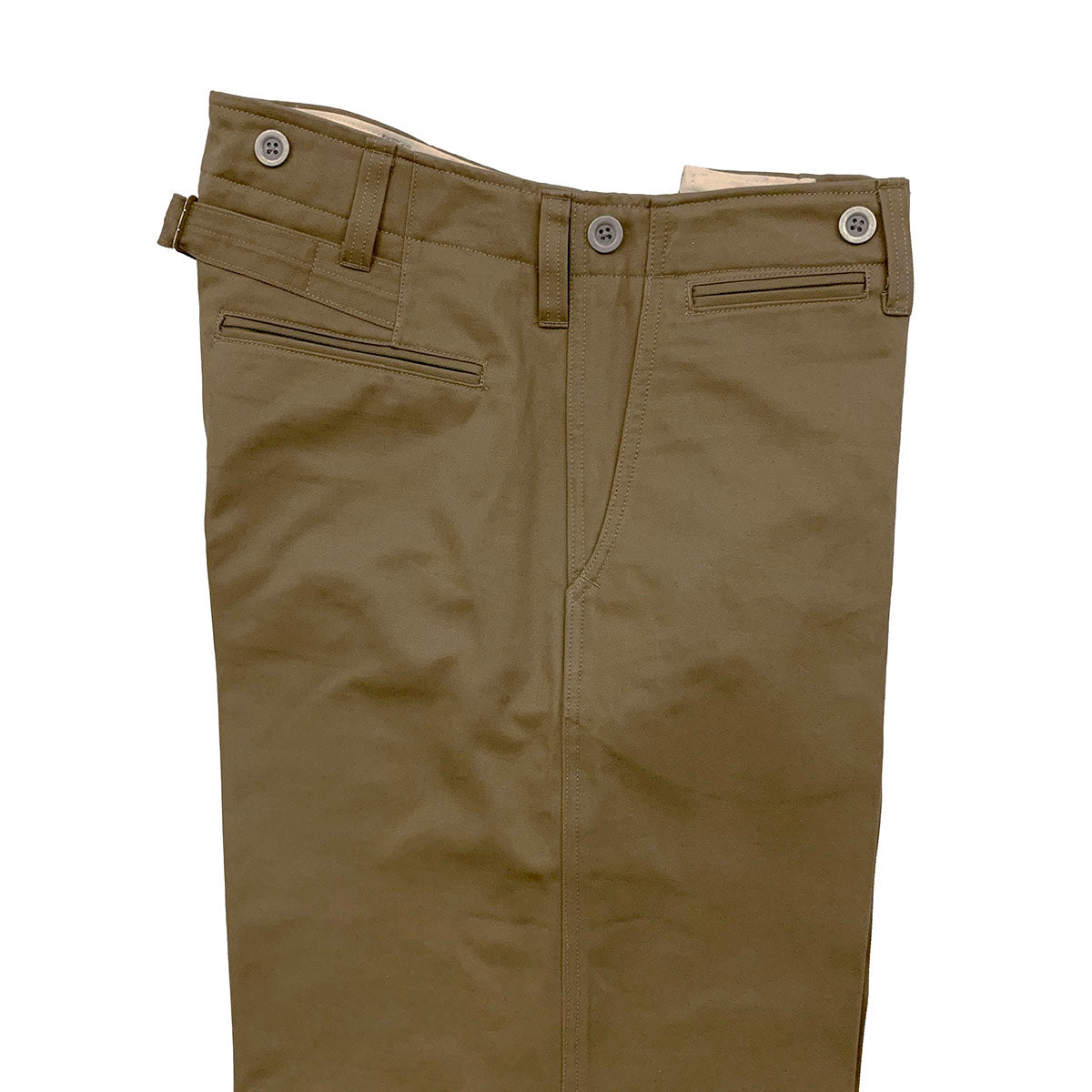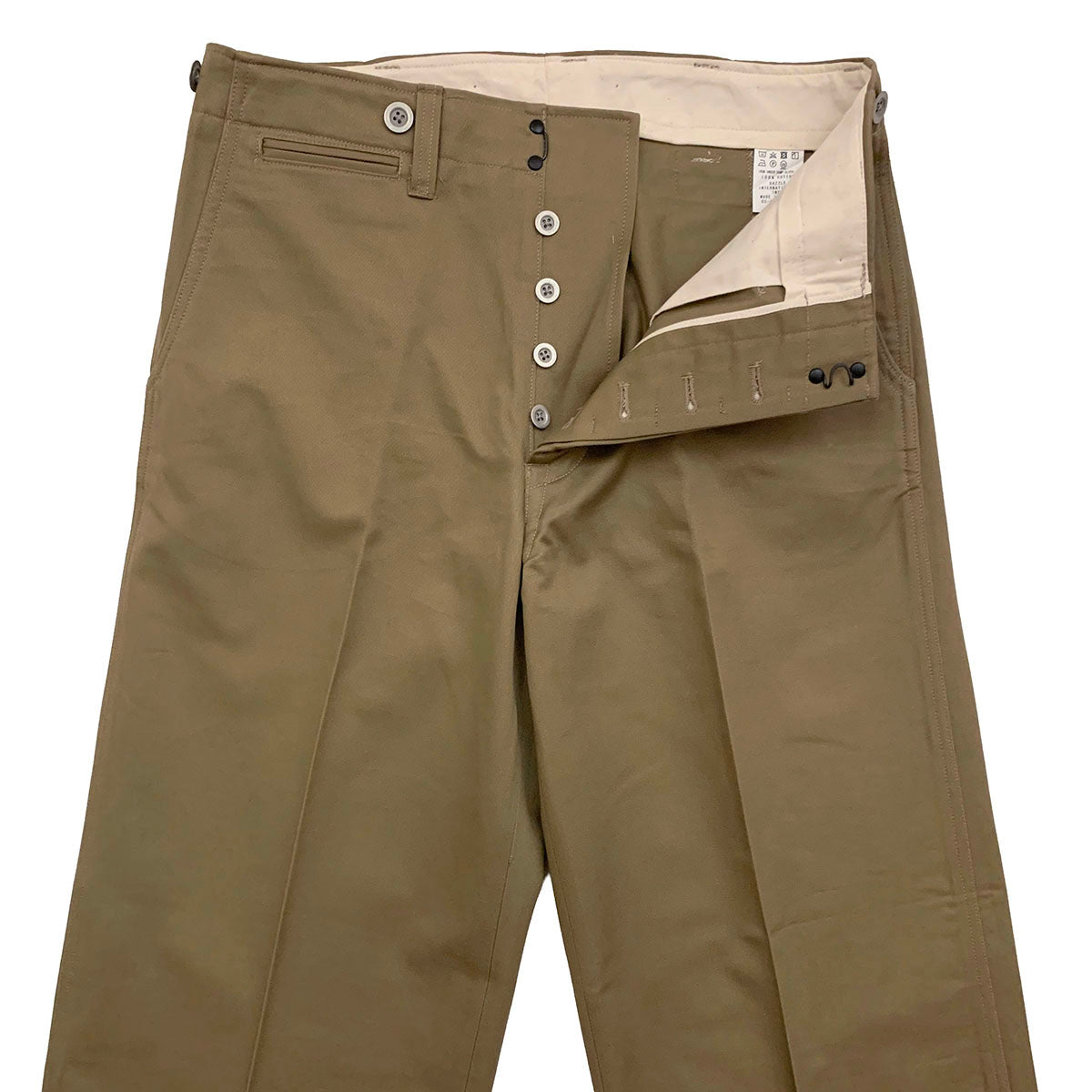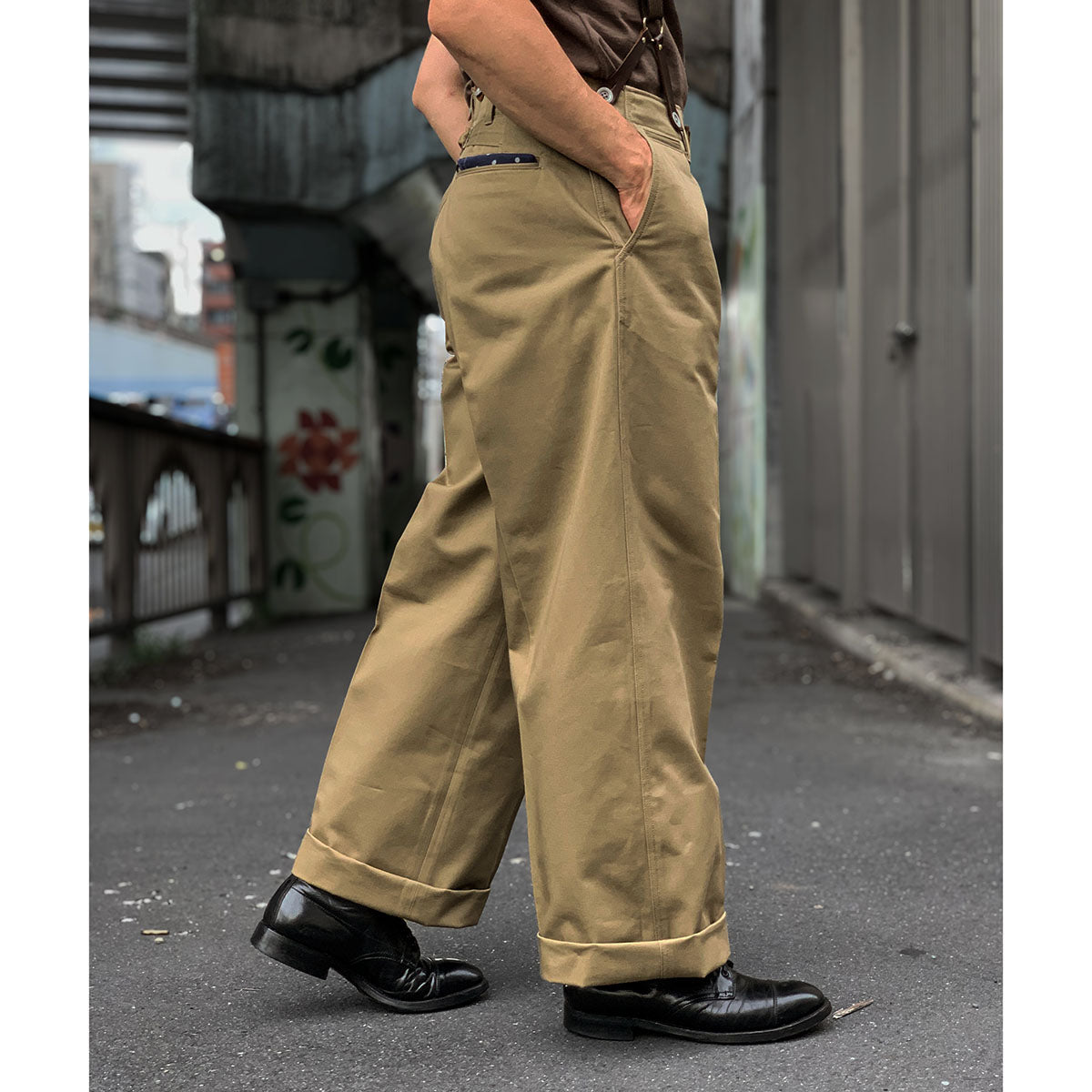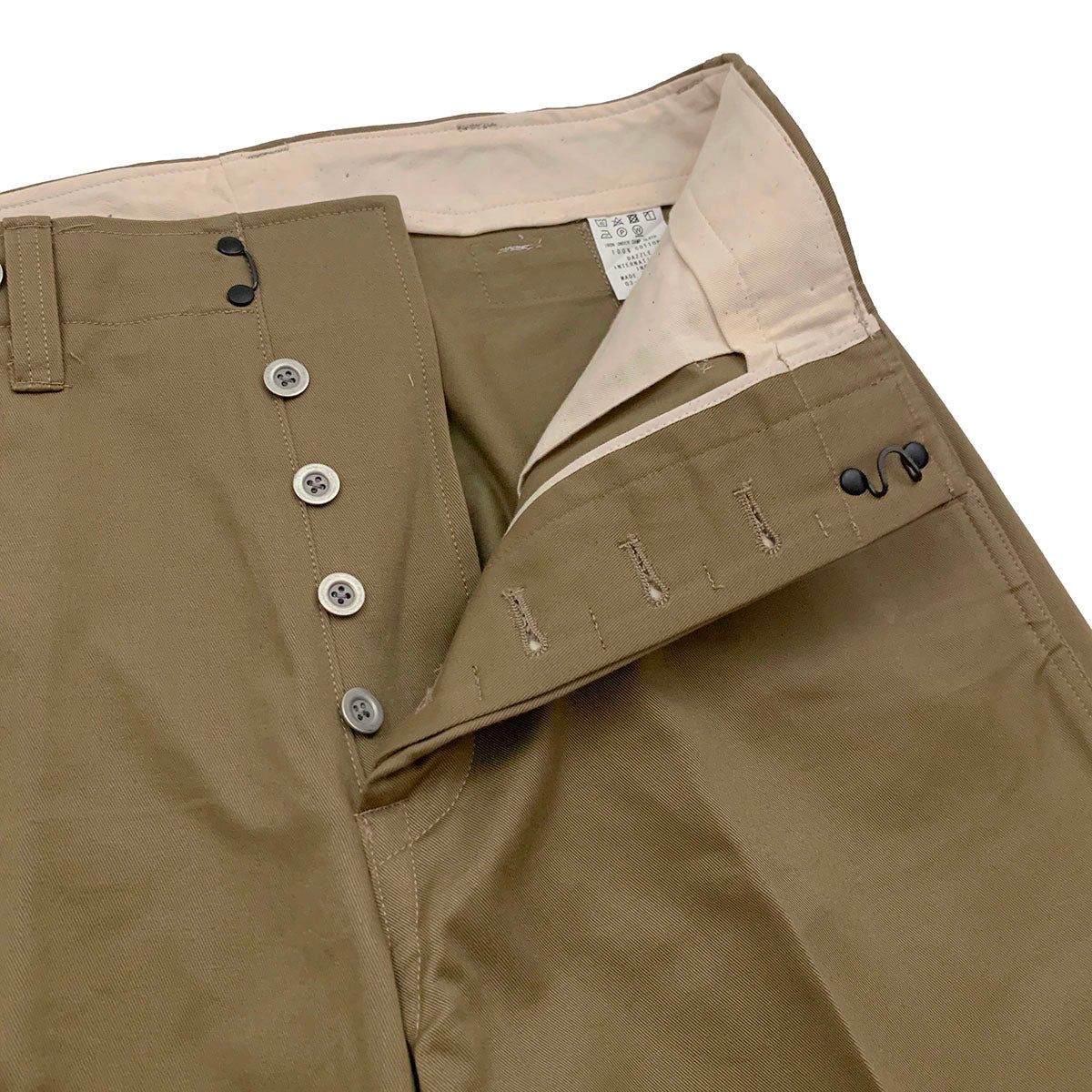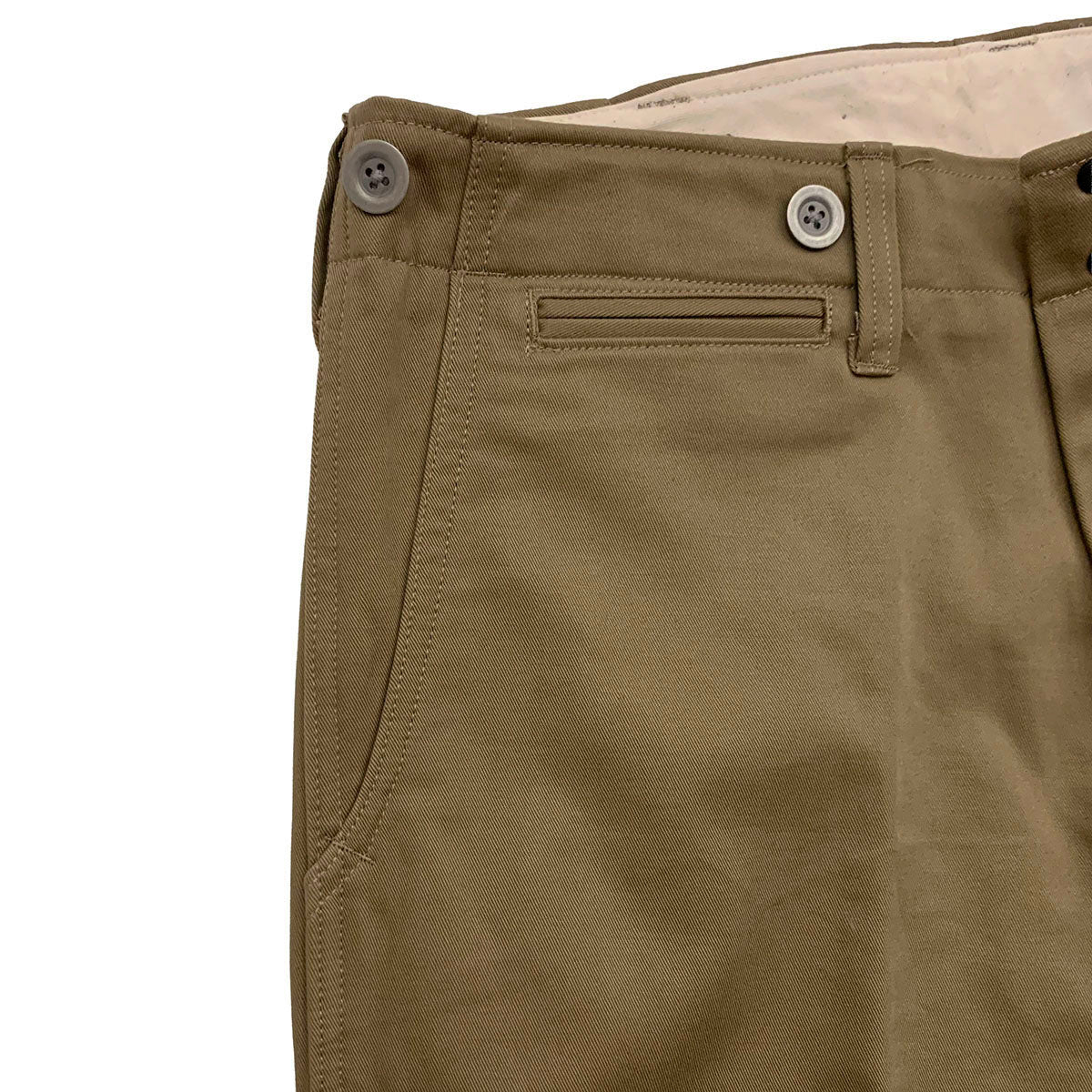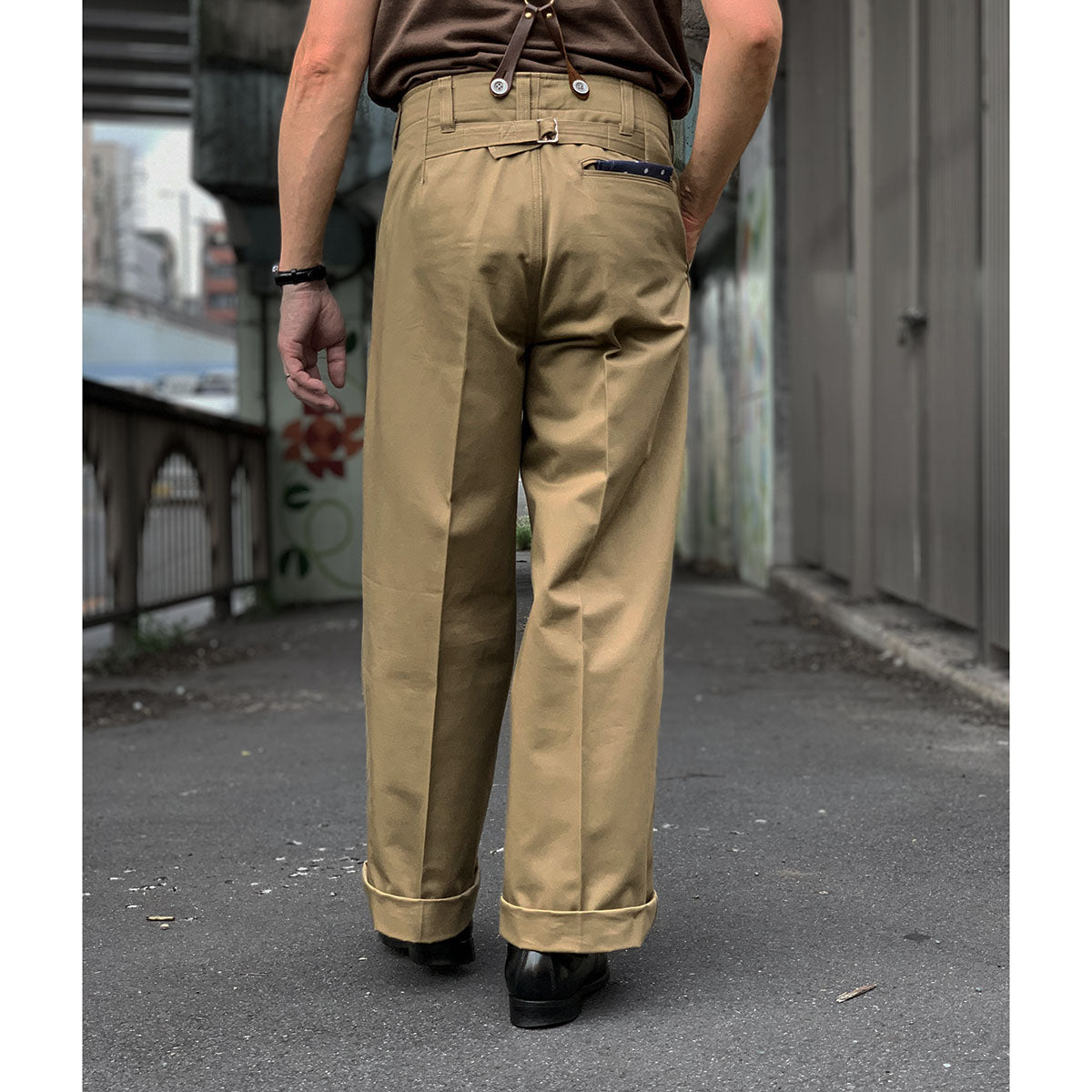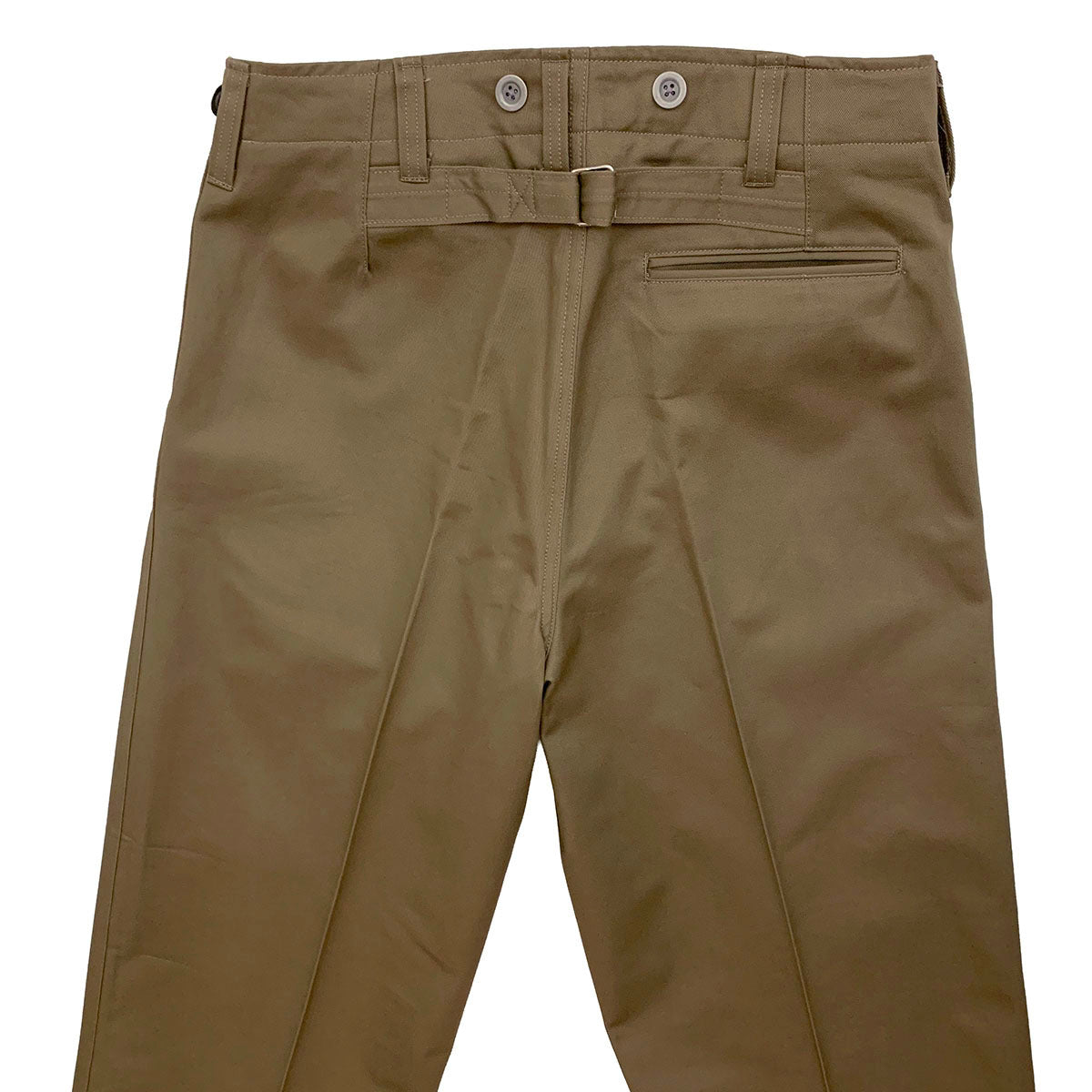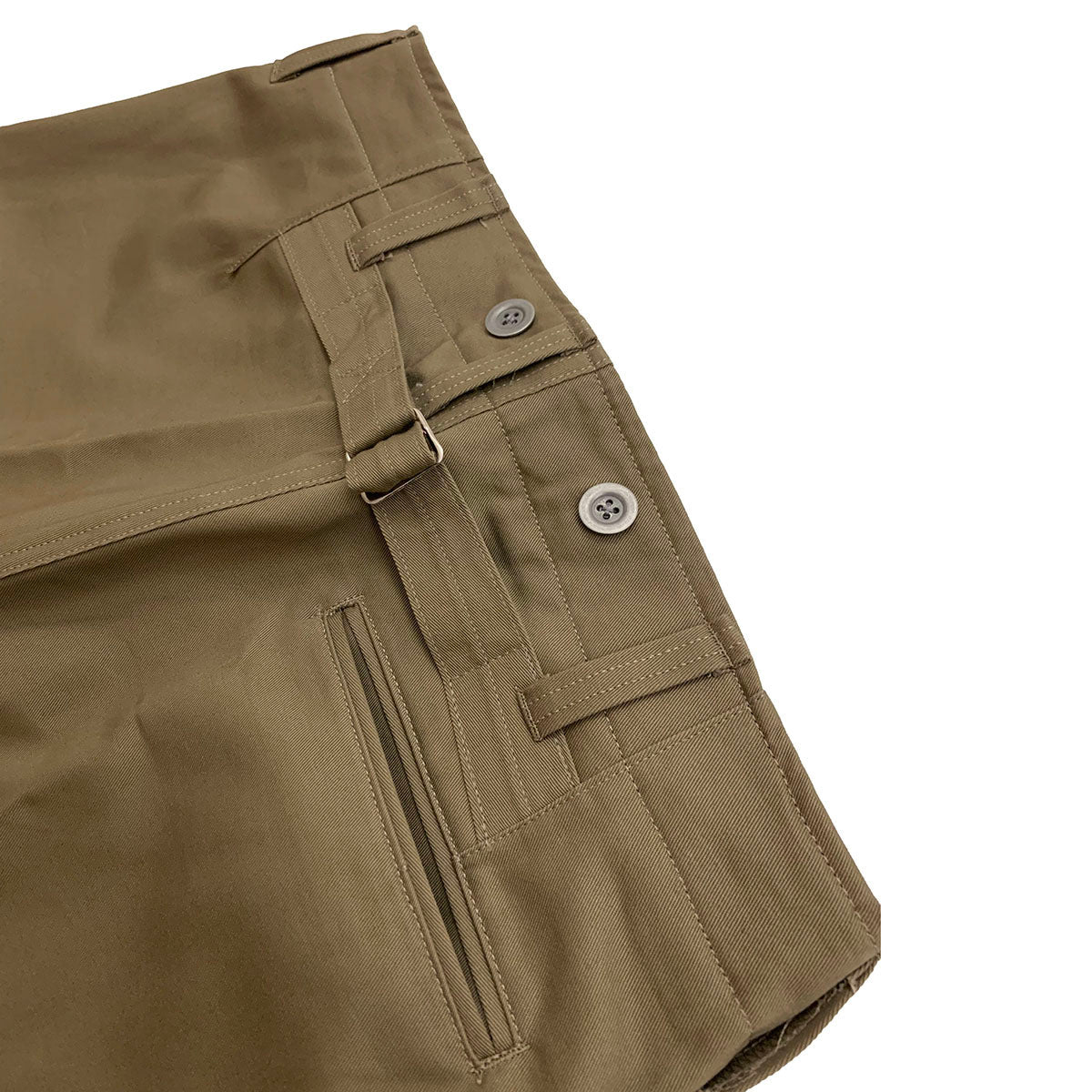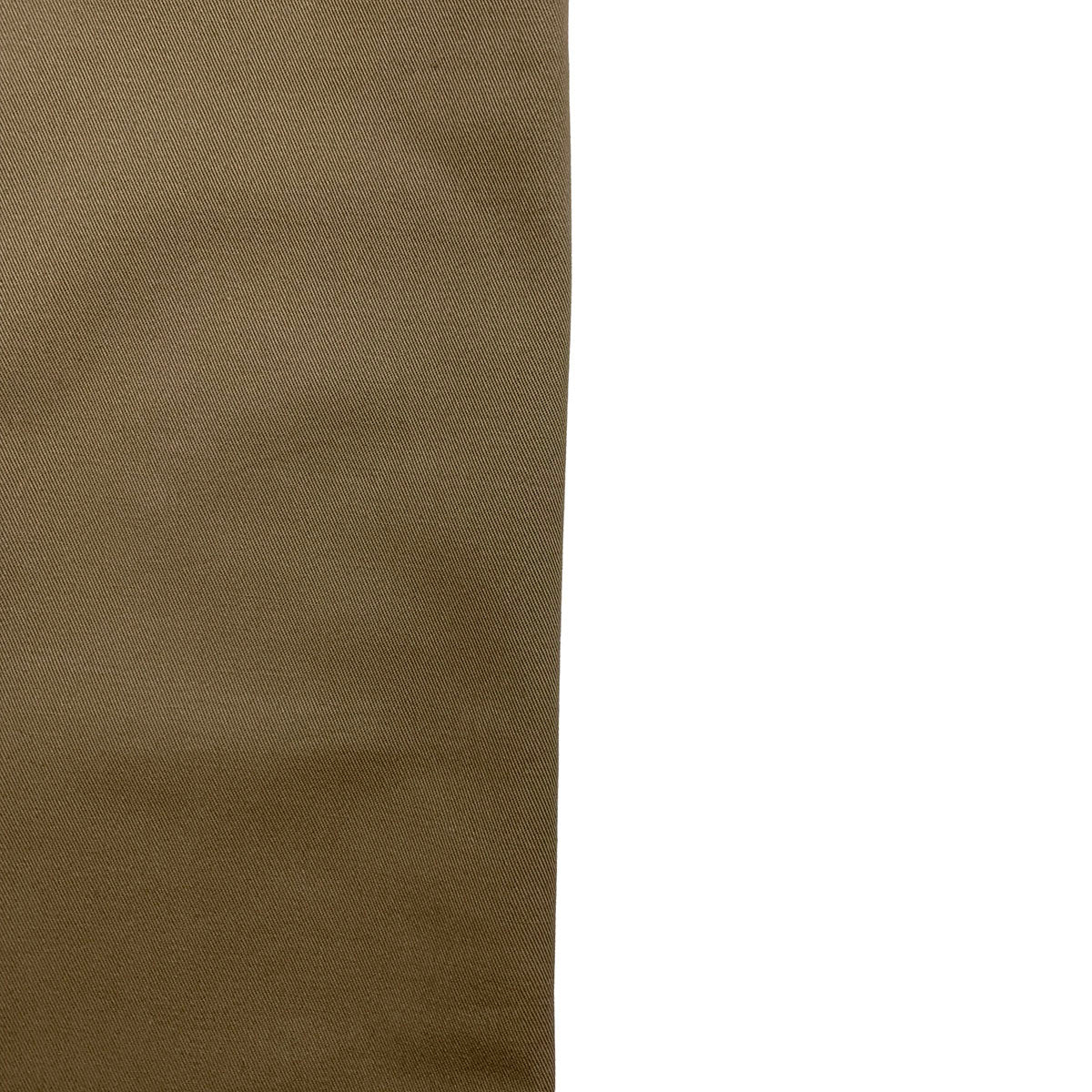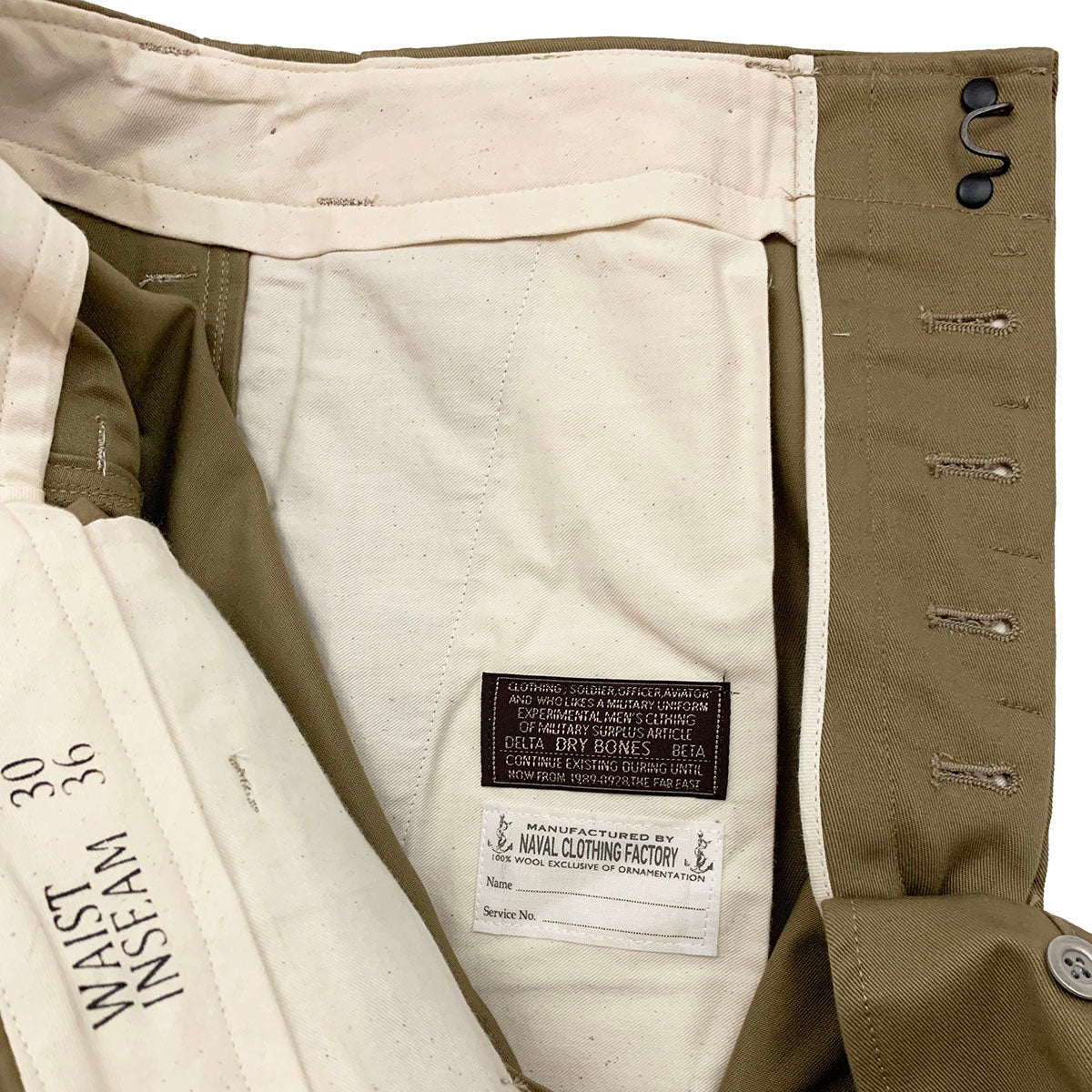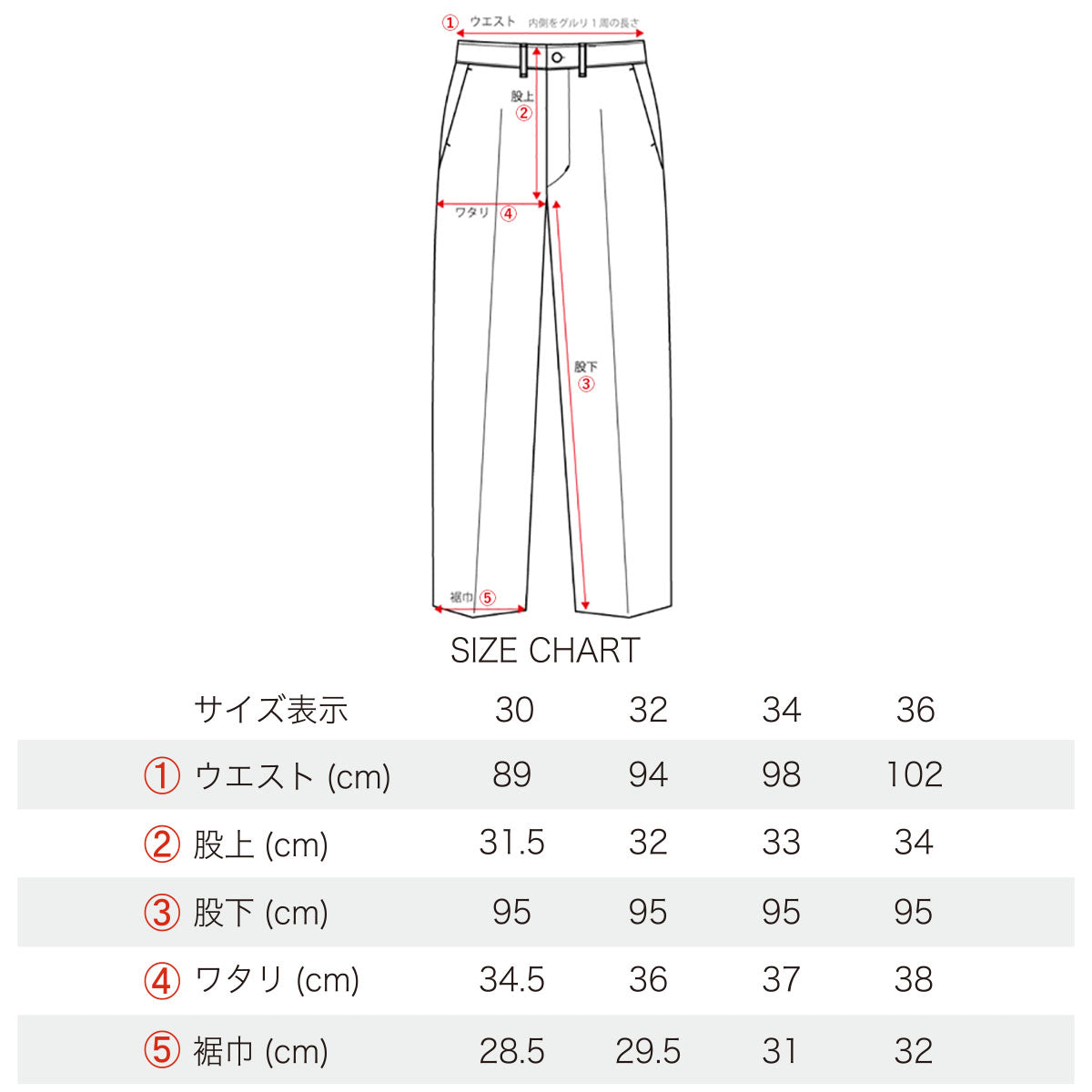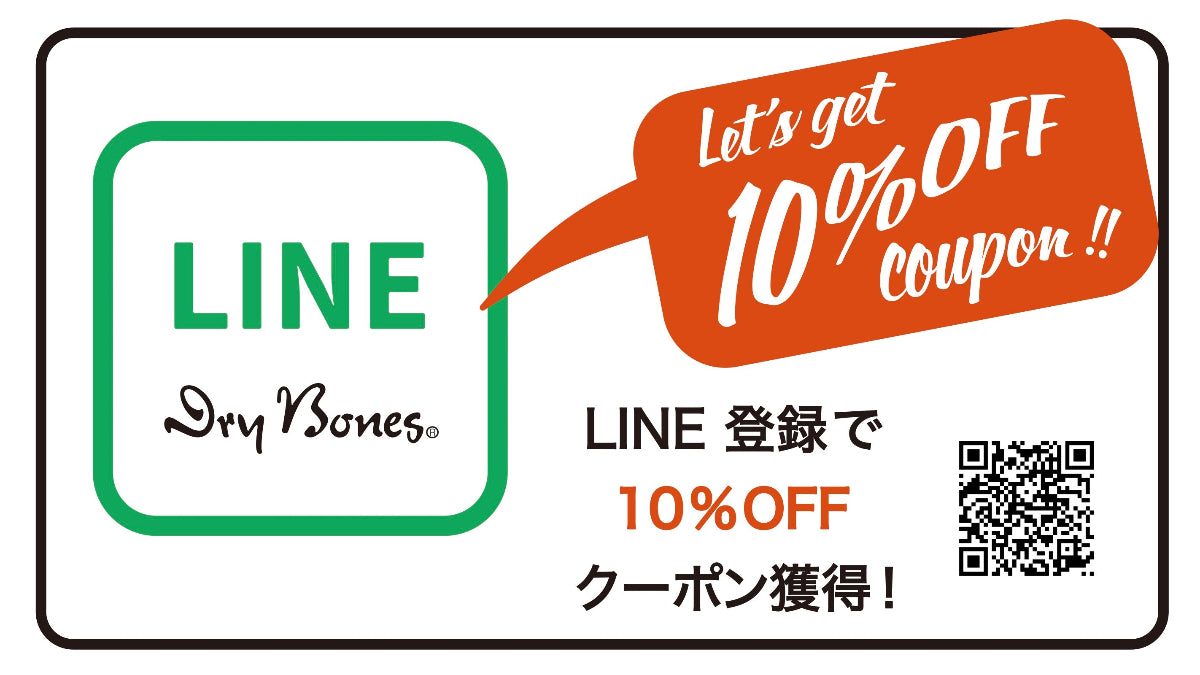Dry Bones Online Shop
The Civil War Type Chino Cloth Trousers
The Civil War Type Chino Cloth Trousers
Couldn't load pickup availability
DP-870 The Civil War Type Chino Cloth Trousers
100% Cotton
The design is based on the utility trousers that appeared during the Civil War in the United States in the 1860s.
During the American Civil War, the Union Army developed utility trousers made of chino cloth and supplied them to soldiers.
The features of these trousers include a wide thigh width, dull metal buttons, a large back strap for adjusting the waist size, etc.
It contained most of the elements that would become the origin of later work-style trousers.
Dry Bones has a product number called 41 KHAKI that has been produced for over 30 years since the brand was founded, and this project will take a look back at the origins of this masterpiece.
The fabric is 10 count single yarn chino cloth.
It uses a thicker, more durable material than the 1940s version.
The buttons are four-hole metal buttons, which have been around for a long time.
The material of these buttons is rough and many of them have burrs that have not been removed, and it is also true that many of them are missing.
Therefore, we have adopted buttons made from the same material but with the burrs thoroughly removed.
After 1942, these metal buttons were discontinued and replaced with urea buttons, making this a very rare accessory.
It also comes equipped with a backstrap, which was popular in the 1800s.
The silhouette is straight and wide from the thigh to the hem.
Originally, the main style of utility trousers during the Civil War was the knickerbocker style.
It has a wide waist and a tapered hem, and is worn by tightening it with a spindle.
Knickerbockers are an item brought to America by Dutch immigrants.
In the early 1800s, they were used for sports such as horse riding, mountain climbing, and golf because the hem was not an issue.
Later, Dutch immigrants formed socialite groups in New York and even started secret societies (even today, the term Knickerbocker refers to Dutch immigrants in English).
I believe that because these trousers were such a traditional pair, they were officially adopted by the Union Army.
From the late 1800s to the 1920s, trousers that were wide from the crotch to the hem, with no tapered hem but a straight, wide trouser from the crotch to the hem, became popular and were called Oxford trousers.
So, I decided to incorporate the silhouette of the Oxford bags...
I designed it as a pair of utility trousers from around the 1850s.
We also paid particular attention to the sewing specifications.
The outside of the side seams are rolled and the welts of each pocket are sewn after making a very time-consuming part called a "kneaded ball".
On the other hand, the inner seams are split and sewn with a serger to prevent tearing.
I think it was probably because there were no sergers at the time, so it was just cut off.
Modern sewing techniques were used to sew this part.
In addition, as a special touch unique to Dry Bones, piping has been added to the inside left and right sides of the Tengu.
It is the highest quality sewing specification for men's clothing (antique is cut
(It's always like this).
The front also features riveted iron hooks, the same type used on European dress pants.
It also retains the Euro specifications unique to the 1800s.
And as proof that it was made using this type of stitching, the right pocket lining is fitted with a woven label that is only found on Dry Bones military items.
The content is presented in a military-like format that will appeal to military enthusiasts.
We have taken chinos, the classic American casual style, and designed this item to its fullest extent.
Get your hands on the ultimate military utility trousers.
Payment
Payment
PayPal payment
Please pay with PayPal.
Credit card payment
The card companies that can be used are VISA, MasterCard, JCB, and American Express.
You can choose to pay in a lump sum, in installments, or revolving payments.
Regarding delivery
Regarding delivery
All deliveries are made by EMS.
